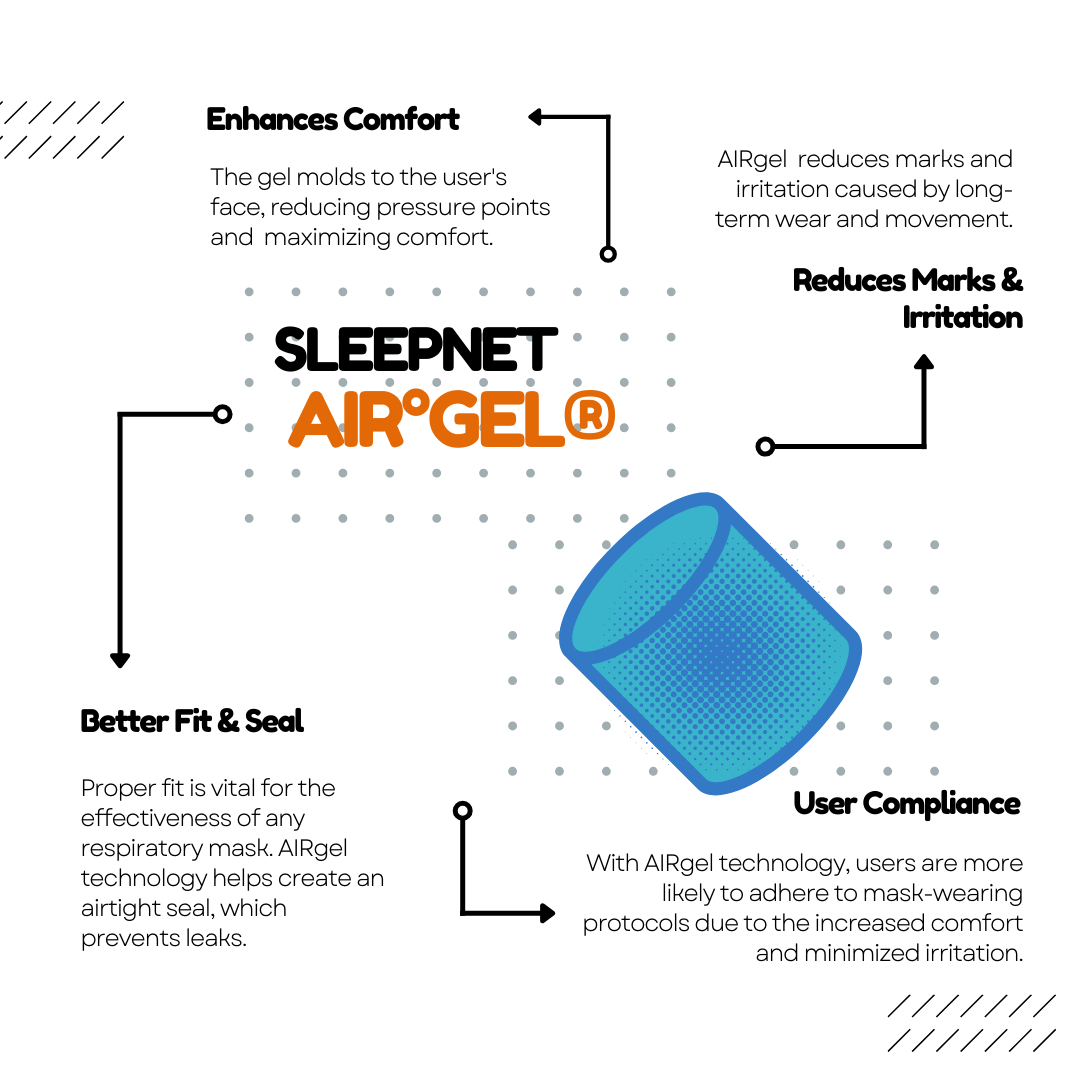Introduction
For years, Alex struggled with CPAP therapy. As someone who moved frequently throughout the night, finding a mask that stayed in place was troublesome. Every morning, Alex would wake up to discover that the mask had shifted, causing air leaks that disrupted sleep and compromised therapy. Frustrated and exhausted, Alex was on the verge of giving up—until discovering the Ascend® Full Face Mask from Sleepnet.
This case study explores how the Ascend Full Face Mask transformed Alex’s CPAP experience by providing a secure, flexible fit designed for active sleepers.
Background
Like many CPAP users, Alex was diagnosed with obstructive sleep apnea (OSA) and prescribed CPAP therapy to prevent oxygen deprivation during sleep. The biggest issues Alex faced included:
- Air leaks due to the mask shifting during movement.
- Uncomfortable pressure points from over-tightening the straps to maintain a seal.
- Tangled tubing that limited movement and caused sleep disruptions.
- Frequent mask readjustments, making it difficult to stay compliant with therapy.
Alex needed a mask that could adapt to movement without compromising comfort or effectiveness.
The Challenge
Alex’s experience is common among CPAP users who are restless sleepers. Many traditional full-face masks are designed with a static fit, meaning any movement can break the seal and reduce therapy efficiency.
The challenges included:
- Mask Displacement – Frequent movement caused previous masks to shift, leading to poor airflow and disrupted sleep.
- Tubing Tension – The CPAP hose would get twisted or pull on the mask, creating discomfort and additional leaks.
- Difficult Adjustments – Struggling with complex headgear made it frustrating to put the mask back on during nighttime awakenings.
Without a mask that could keep up with movement, Alex’s sleep apnea therapy was ineffective, leading to fatigue, daytime drowsiness, and reduced overall health.
The Solution: The Ascend® Full Face Mask
After researching better CPAP solutions, Alex discovered Sleepnet’s Ascend Full Face Mask—designed specifically for users who move during sleep. Unlike traditional masks, the Ascend® mask features adaptive components that work with movement, not against it.
Key features that helped Alex include:
- 360-Degree Rotating Elbow – The mask’s swivel design allowed the tubing to move freely without pulling the mask out of place. This eliminated tension and twisting, making it easy for Alex to switch sleep positions without waking up.
- Active Headgear Connector – Unlike static headgear, this feature moved with Alex, keeping the seal intact even when shifting from side to side. No more air leaks or pressure points from over-tightened straps.
- Touchless Spacebar – This innovative design provided stability without pressing against the forehead, reducing discomfort and preventing skin irritation.
- Quick-Release Feature – The intuitive slot allowed Alex to easily remove and reattach the mask from the headgear, making nighttime adjustments effortless.
- Replaceable AIR°gel® Cushion – Over time, mask cushions wear down, causing leaks and discomfort. With the soft, replaceable cushion, Alex experienced a consistently comfortable fit without needing to replace the entire mask.
Implementation
Switching to the Ascend Full Face Mask was a seamless transition. After making the switch, Alex followed a few key steps to optimize the experience:
- Ensuring a Proper Fit – Adjusting the mask properly with the active headgear connector provided a snug but comfortable seal.
- Allowing for Movement – The 360-degree rotating elbow allowed Alex to move naturally without worrying about tangled tubing.
- Daily Cleaning – With the replaceable cushion, maintaining hygiene and mask integrity became simple and efficient.
Results
Within just a few nights, Alex noticed a dramatic improvement in sleep quality and CPAP compliance:
- Uninterrupted Sleep – No more waking up to fix air leaks or readjust the mask.
- Consistent CPAP Therapy – With a stable seal, Alex’s therapy remained effective throughout the night.
- Increased Comfort – The mask stayed in place without excessive tightening, reducing pressure points and irritation.
- Improved Energy Levels – Waking up rested and refreshed became the new normal.
Conclusion
For CPAP users like Alex who move frequently while sleeping, the Ascend® Full Face Mask provides a reliable, comfortable, and adaptive solution. With a rotating elbow, an active headgear connector, and a secure yet flexible design, this mask ensures therapy remains uninterrupted, even for the most restless sleepers.
By making the switch, Alex transformed CPAP therapy from a frustrating nightly struggle into a comfortable and effective sleep solution.
For CPAP users seeking a mask that moves with them, the Ascend Full Face Mask is the key to better sleep and better health.
For More Information, please contact .




